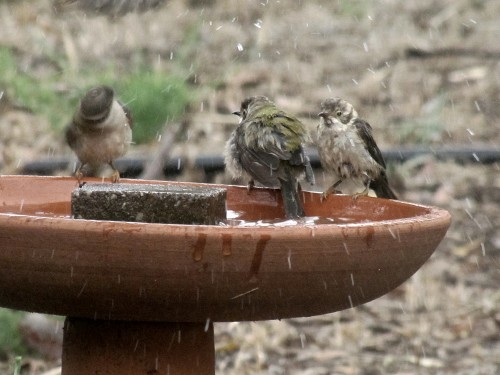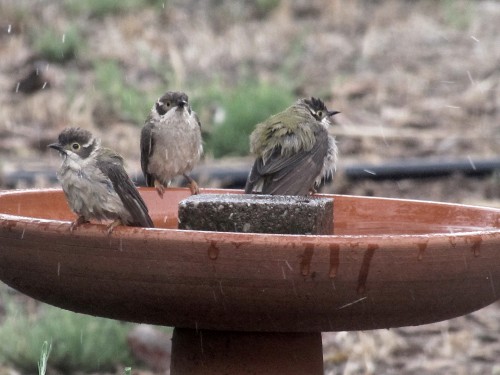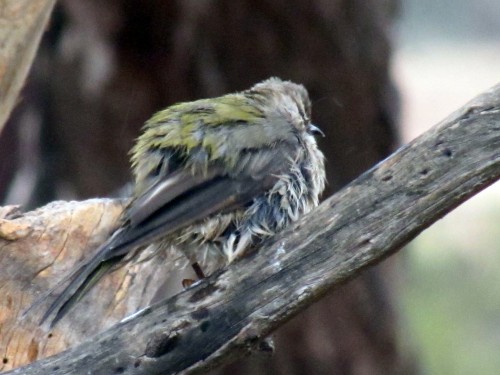Is that a sprinkler?
Our bird baths are very popular with the local resident species, especially on hot days like we have been experiencing here in South Australia this record breaking summer. On the hot days there is a constant stream of birds drinking and bathing.
Some species, like the Brown-headed Honeyeaters shown in today’s series of photos, are no exception. They often come in groups of up to a dozen, sometimes more. When several of them get in and splash around in the cooling water, it looks for all the earth like someone has switched on a sprinkler. Water goes flying in all directions as the birds take on a whirr of activity. Haven’t they heard about conserving water?
And after the drenching bath they retire to a nearby branch to preen and get all those ragged feathers back in line again. No wonder we enjoy watching them so much!
Brown-headed Honeyeaters
Brown-headed Honeyeaters are one of the smallest honeyeaters found in Australia. They are about the size of a House Sparrow and are certainly the smallest honeyeaters in our garden. The White-plumed Honeyeaters are not much bigger.
While I would probably classify this species as a resident species in our garden, they do tend to come and go quite frequently. We see or hear them most days, then several days might pass without a sign of them. I guess they tend to have quite large territories around here.
The individual shown in the photo above is unusual. It was alone while feeding at the flower (click on the photo to enlarge the image). Earlier in the day – before I grabbed the camera – several others had been coming to feed on this bloom.
Brown-headed Honeyeaters are quite gregarious. When they come to our bird baths they often come in a small flock of 10 – 15 all crowding around looking for a drink. When it is bath time, they will often line up on a nearby branch and wait their turn to have a dip. I guess that they are very polite birds.



